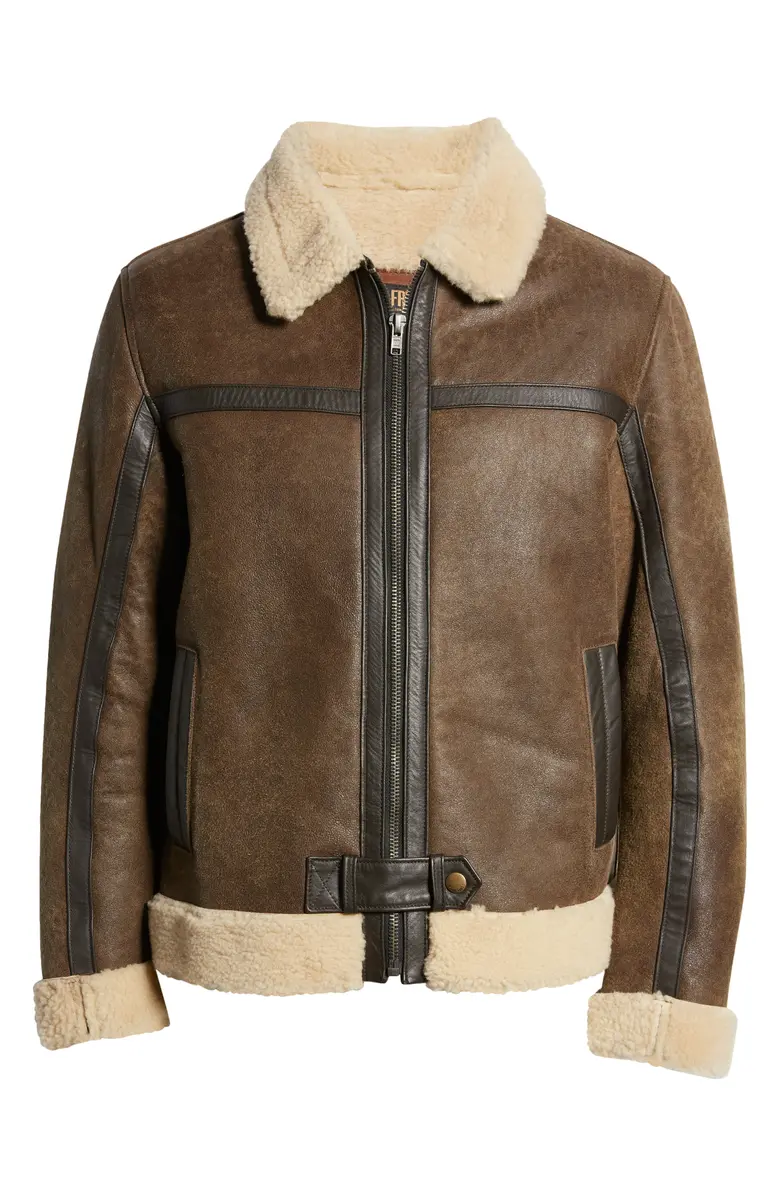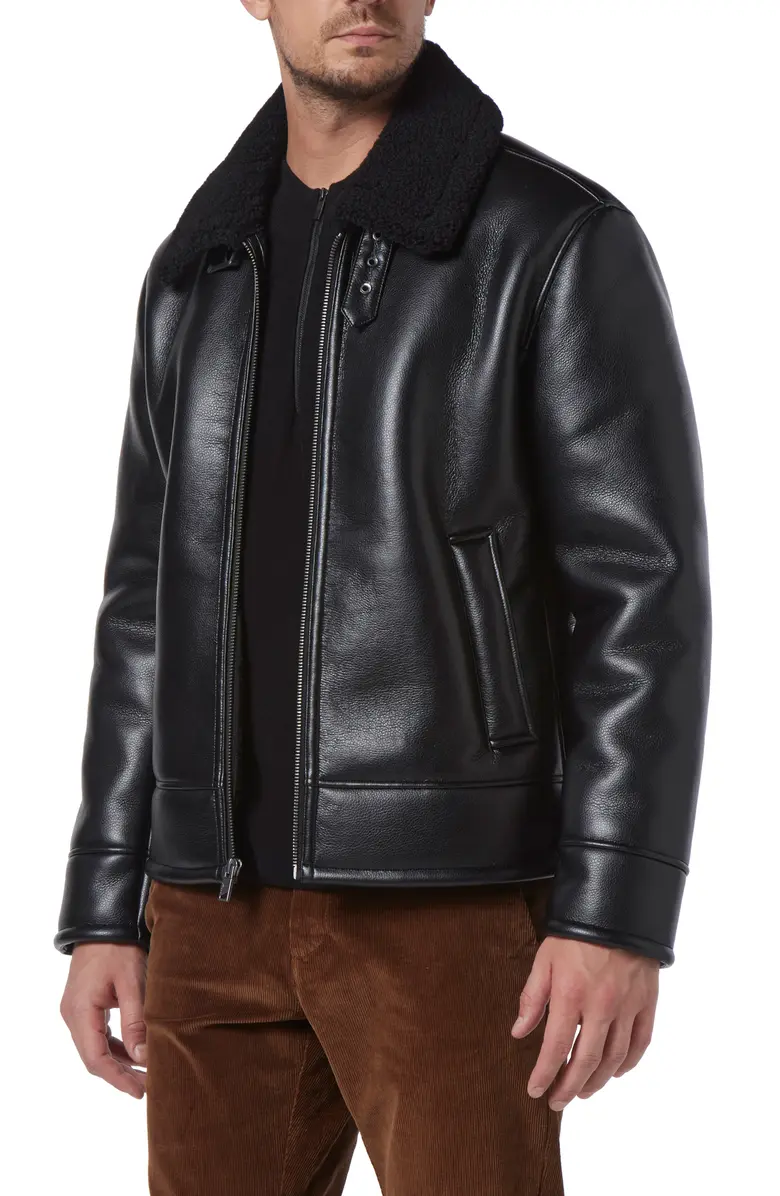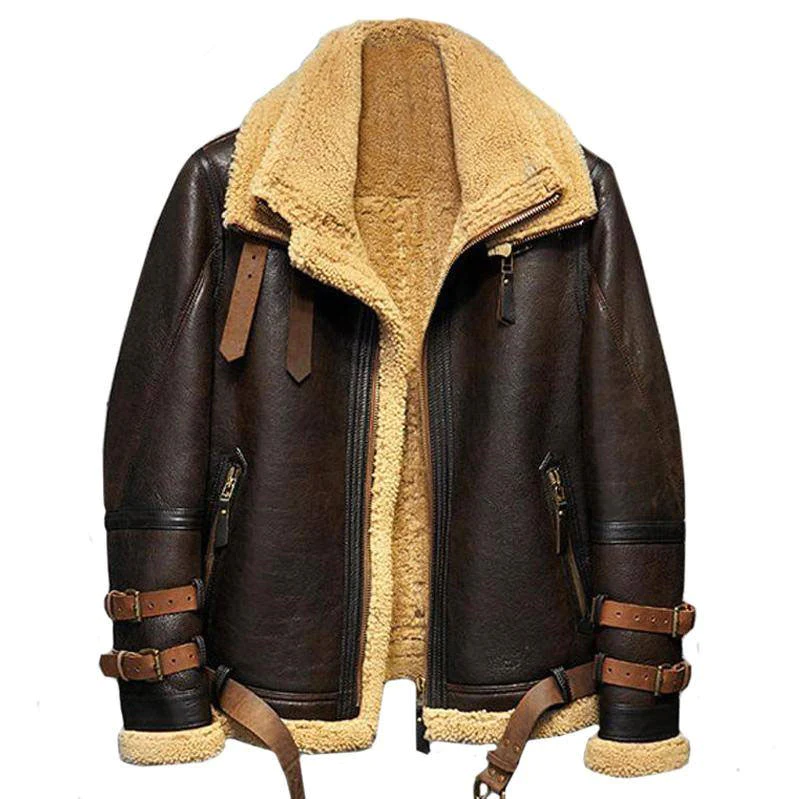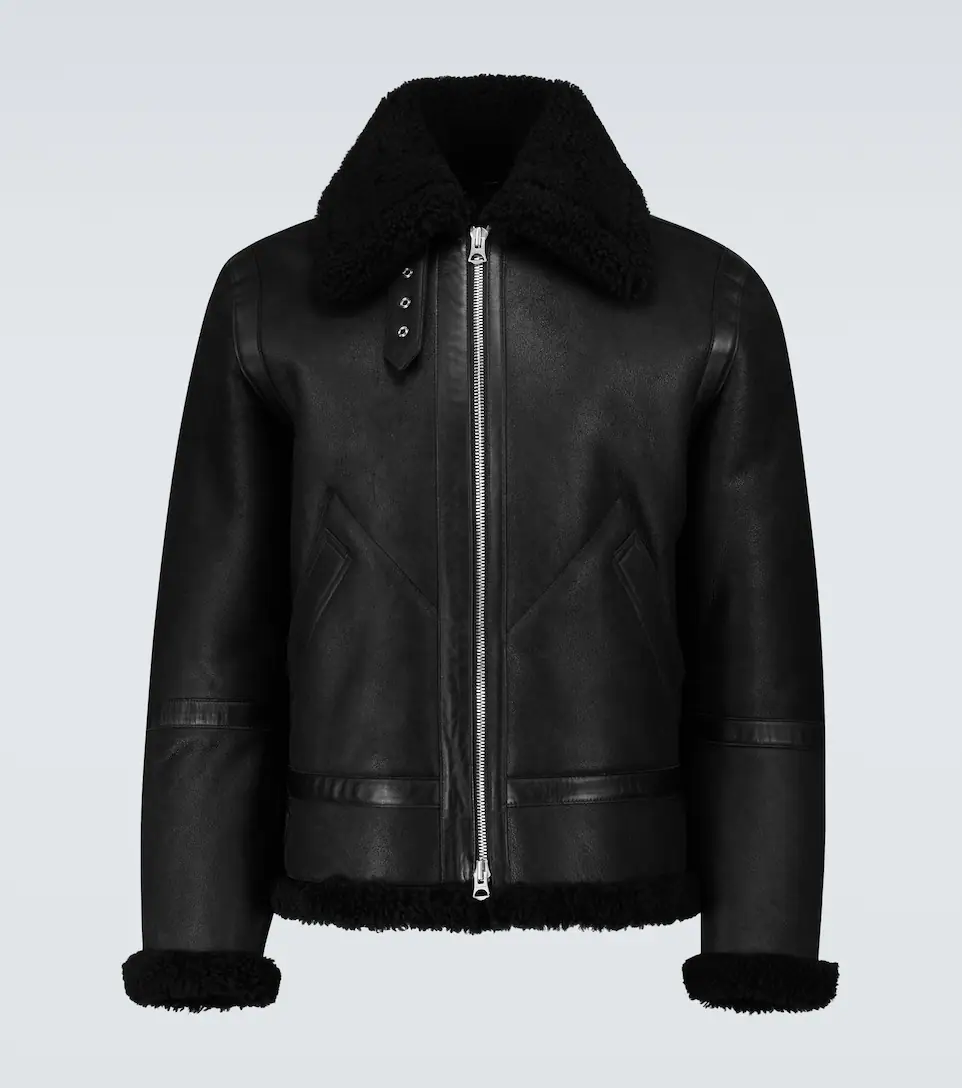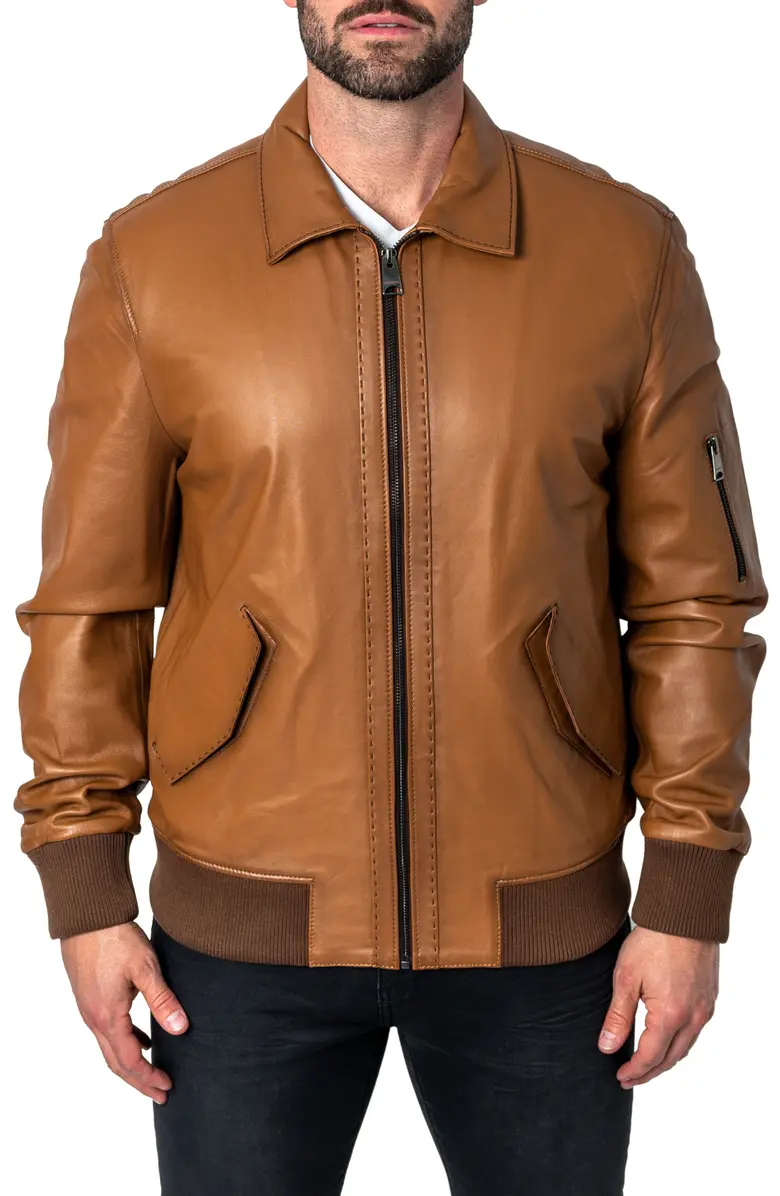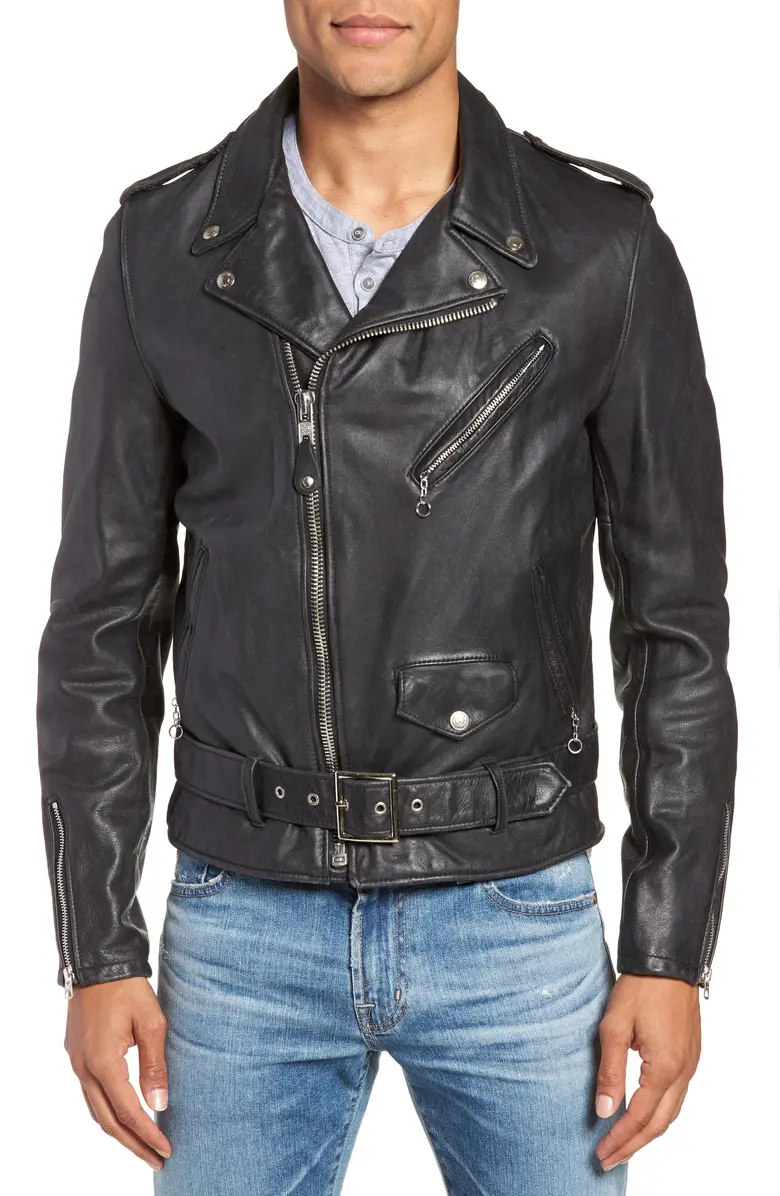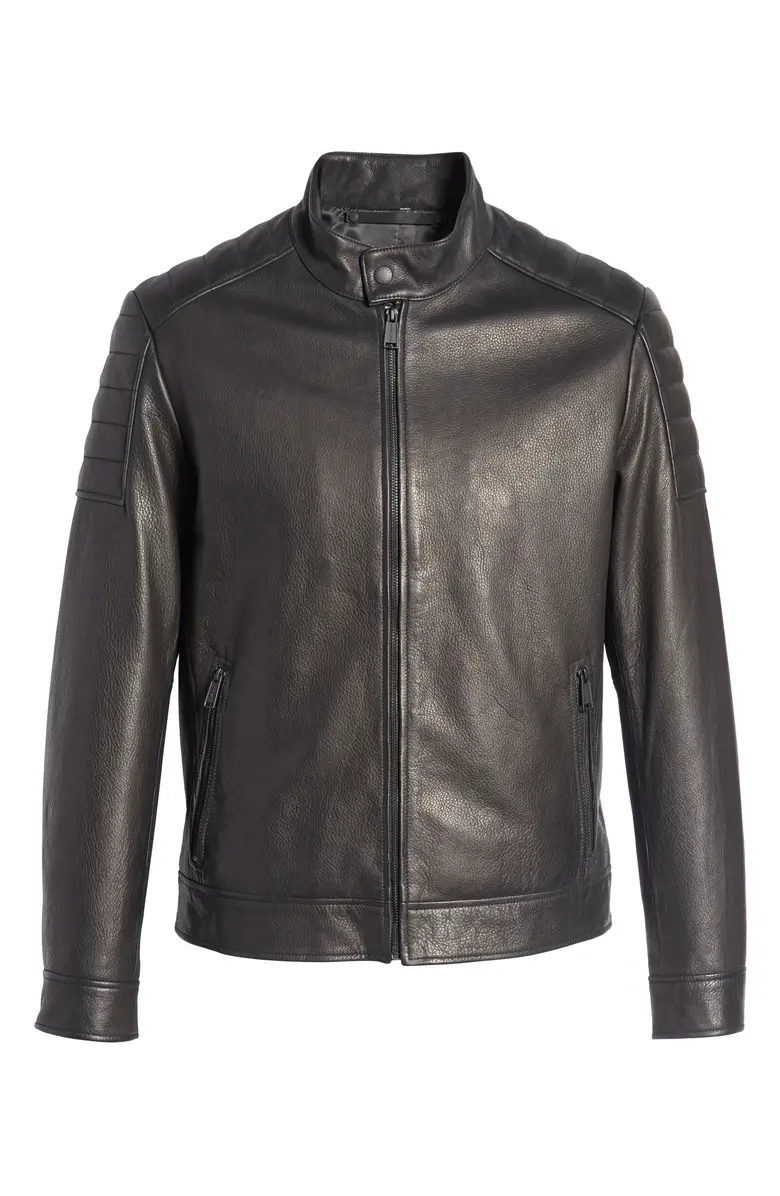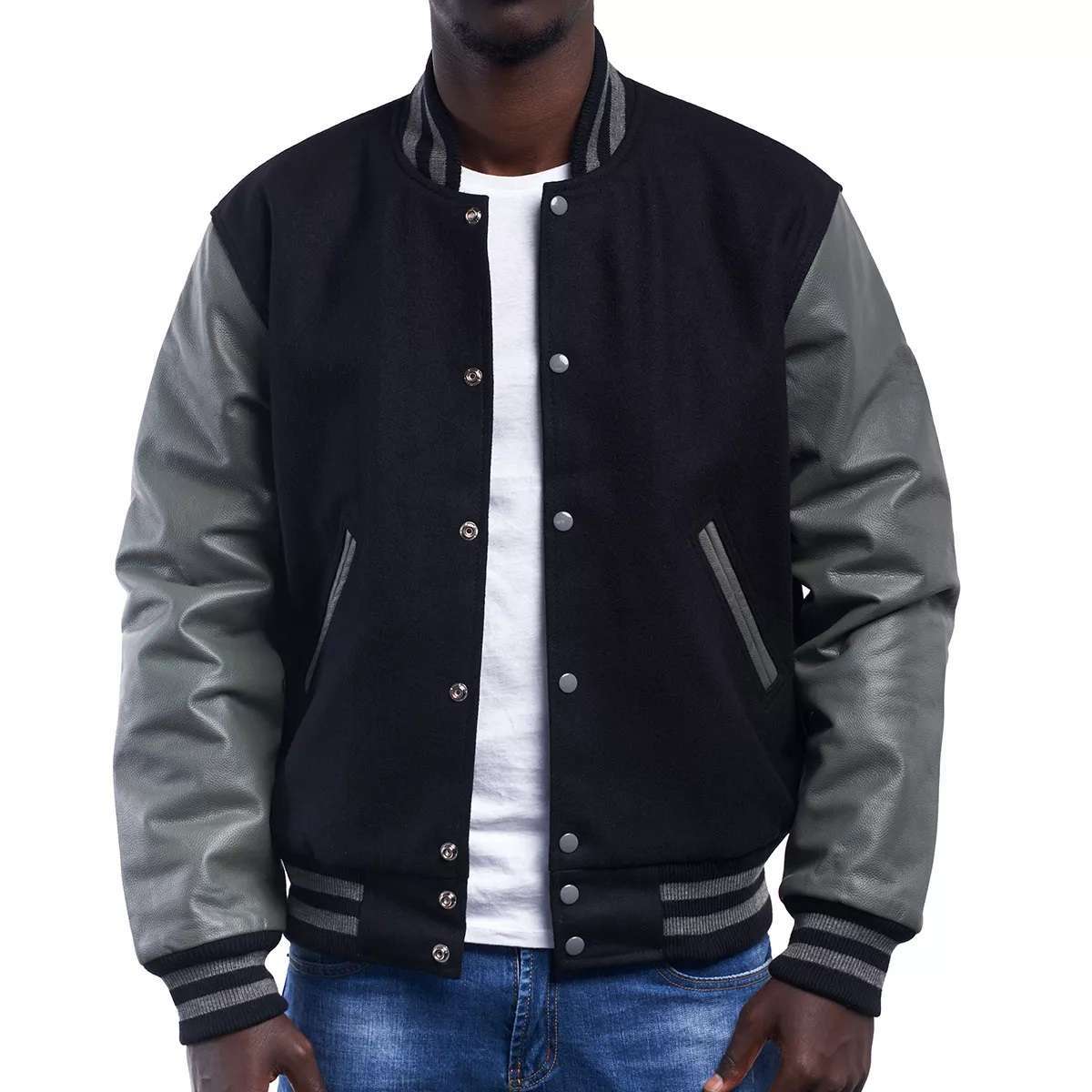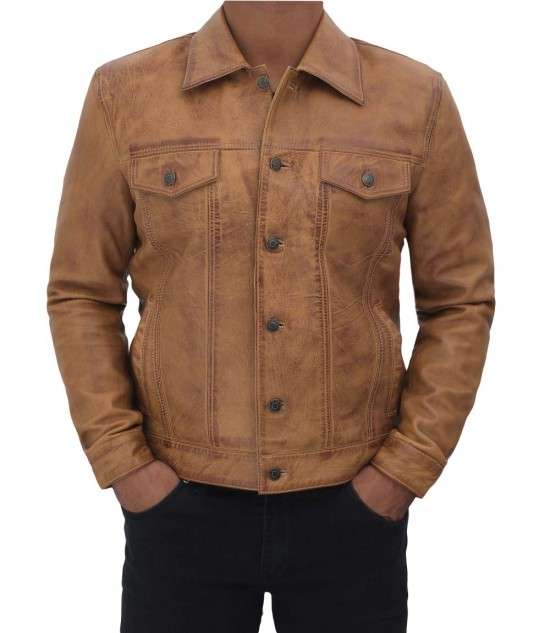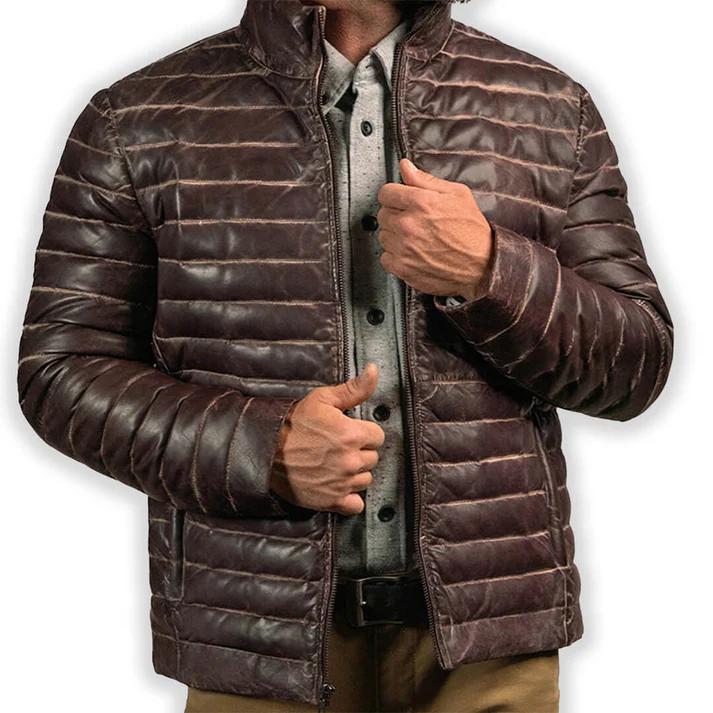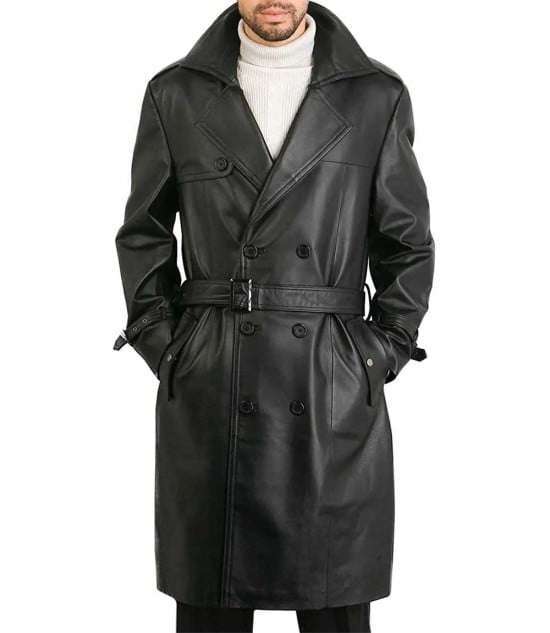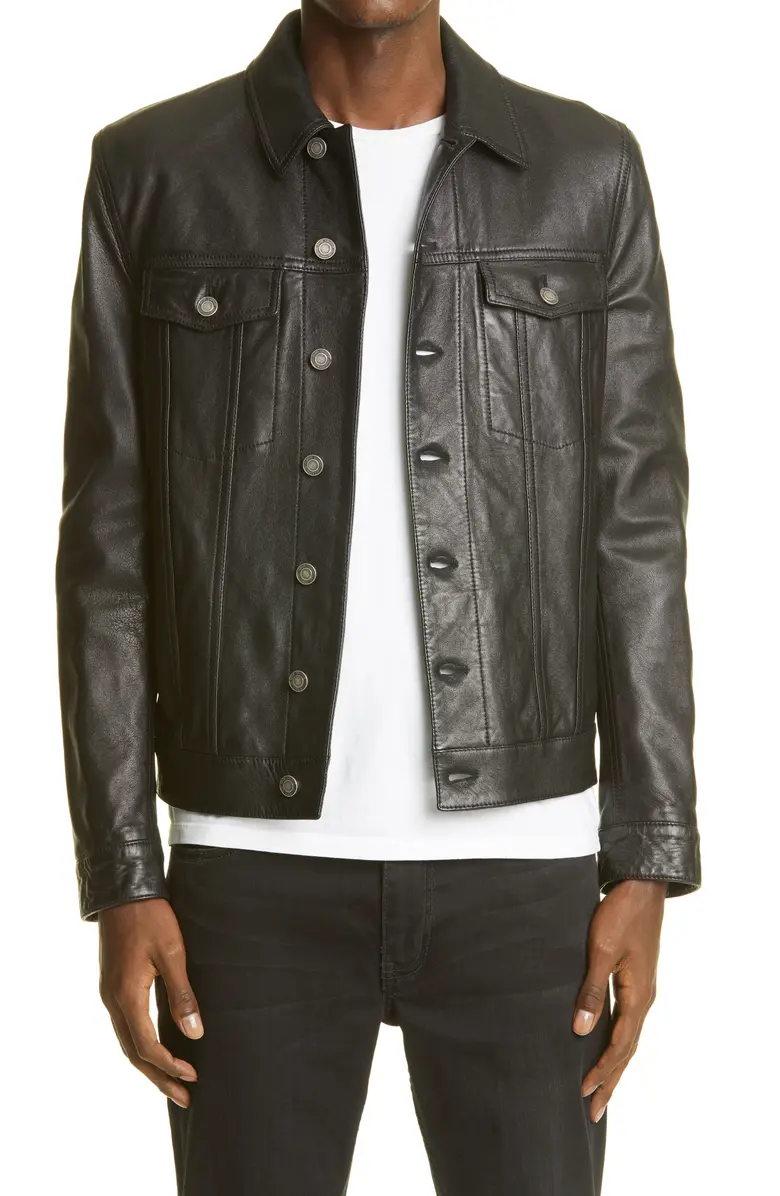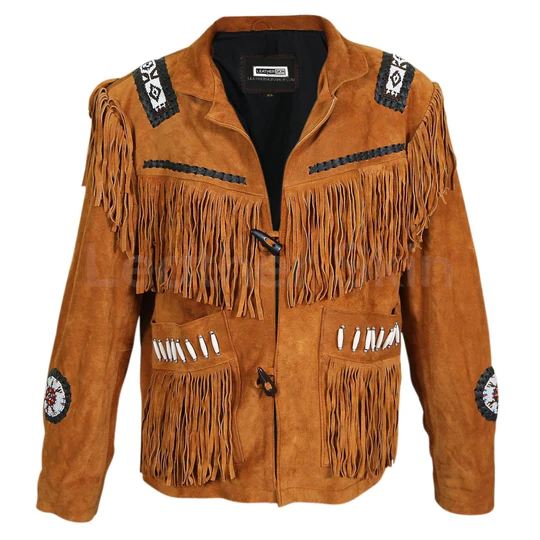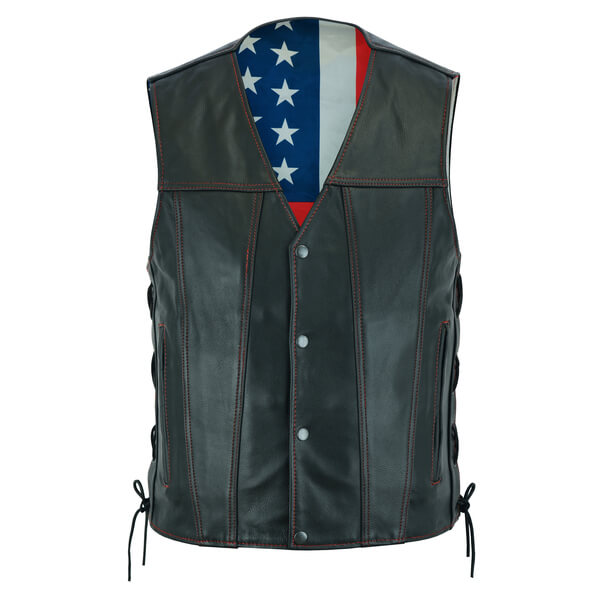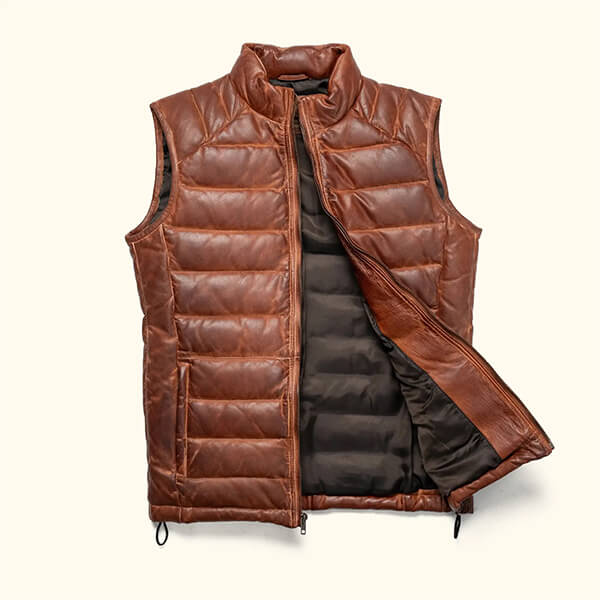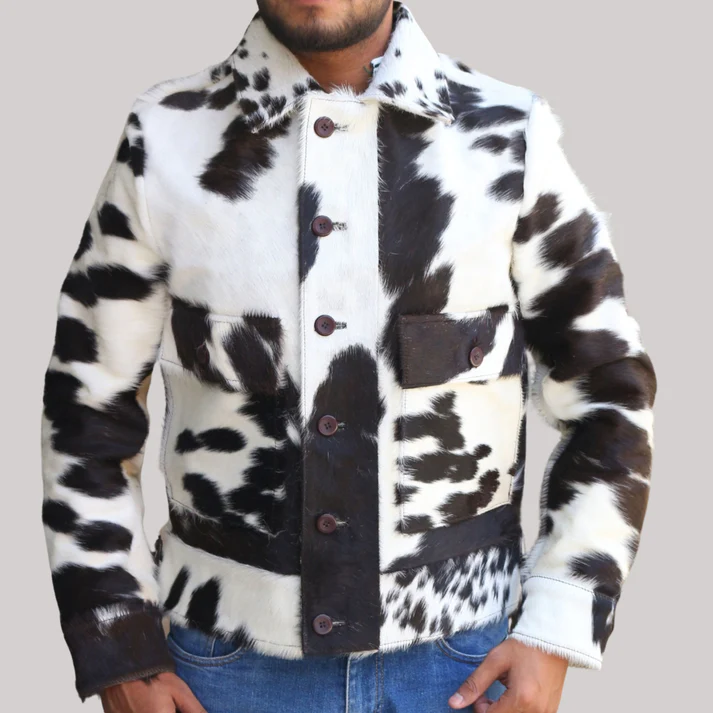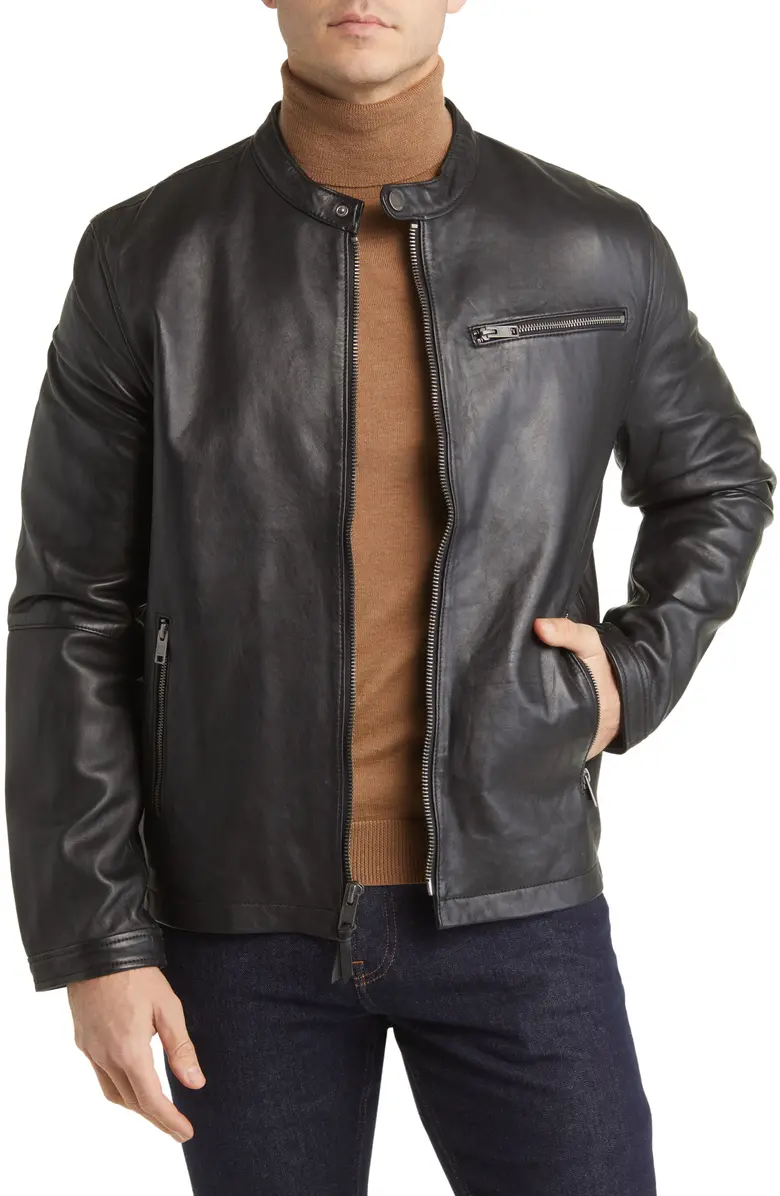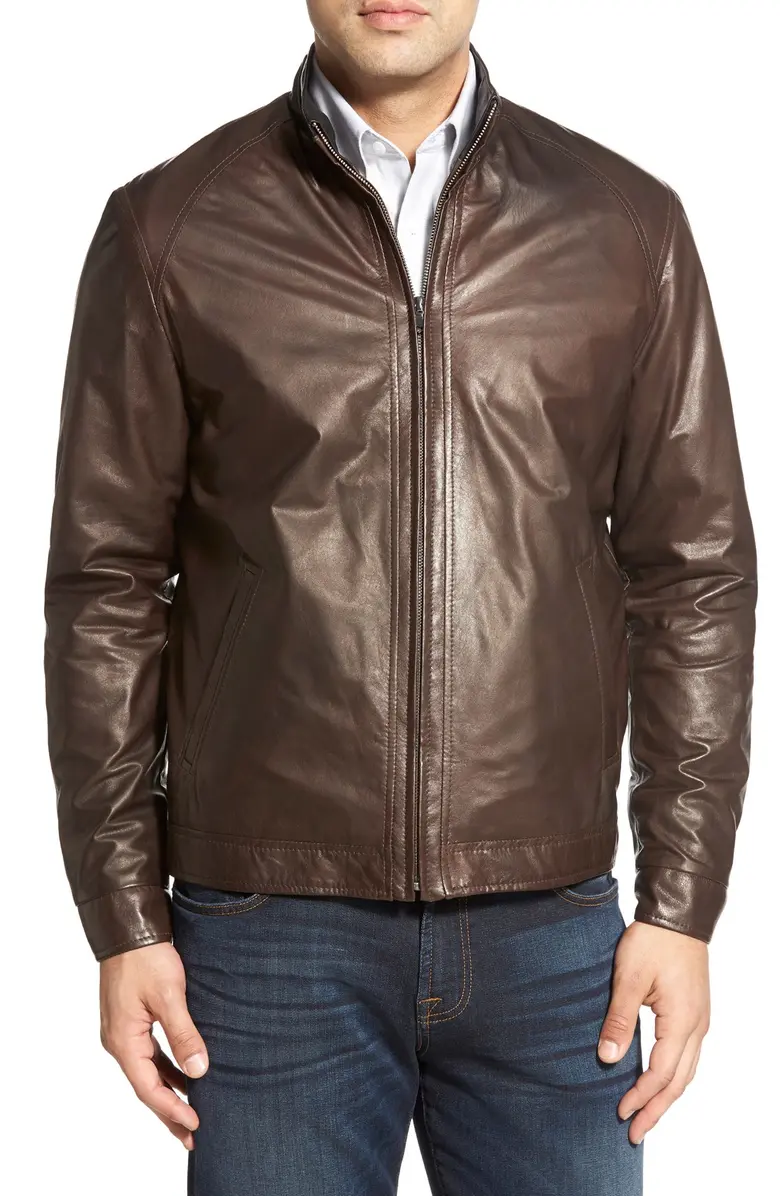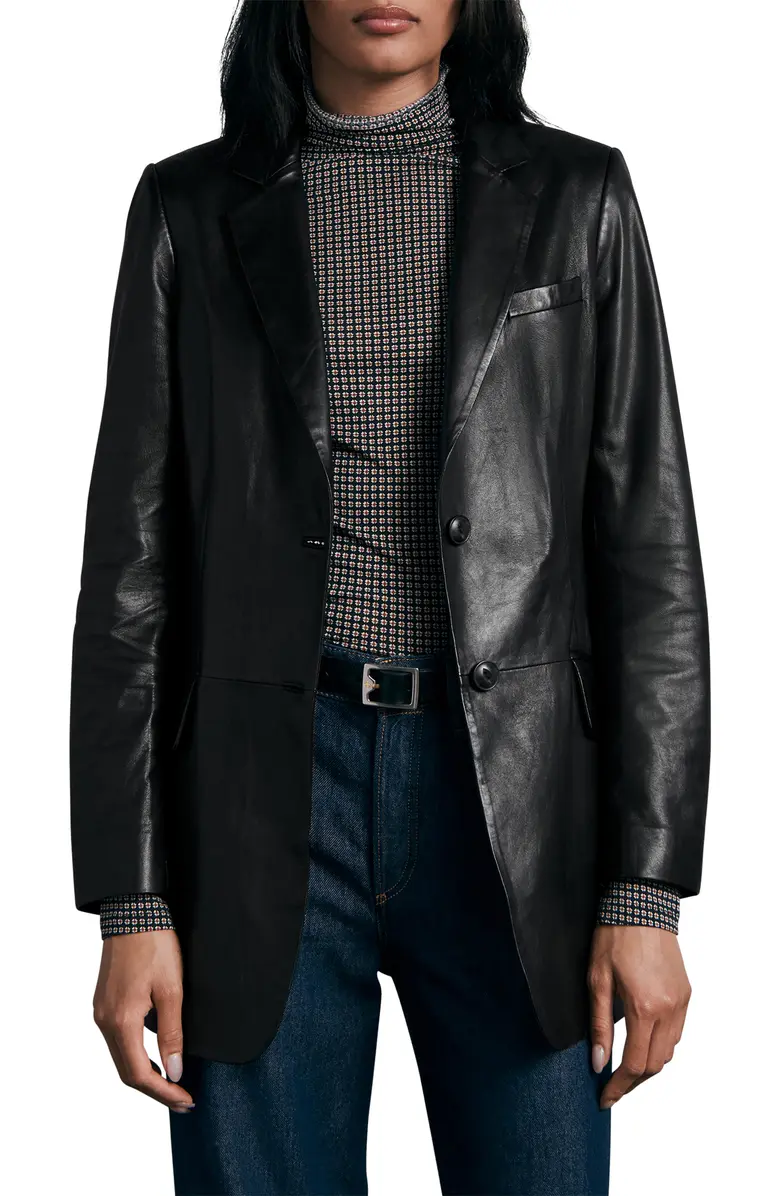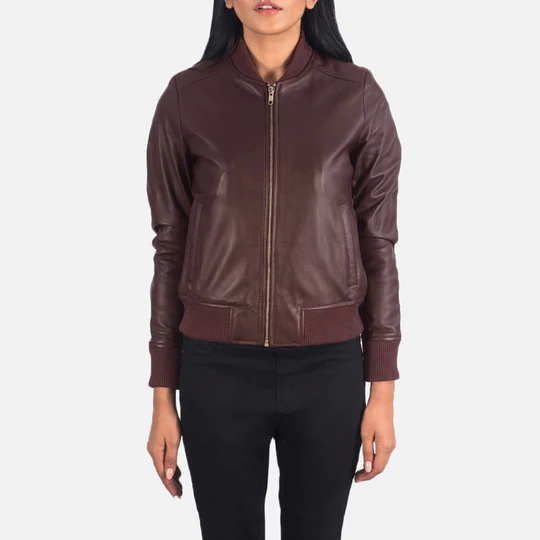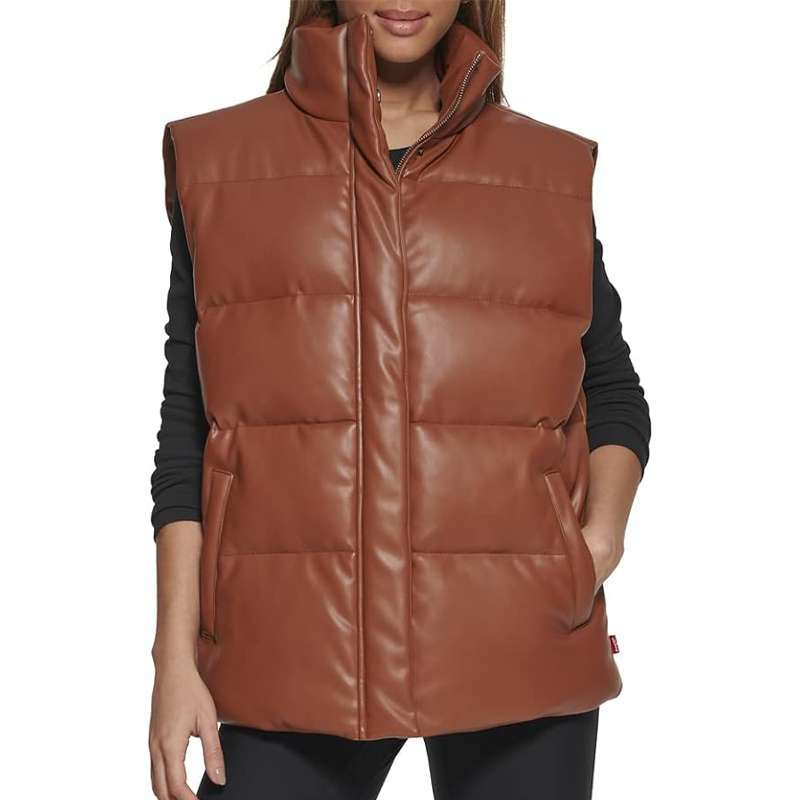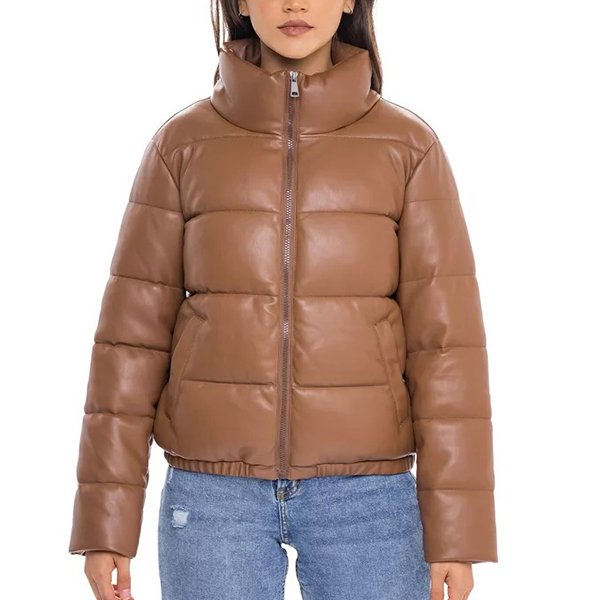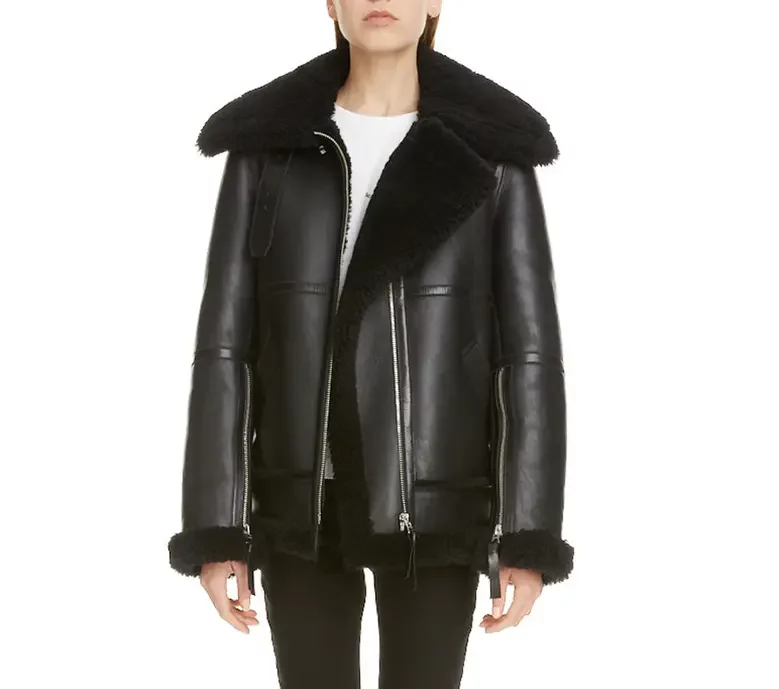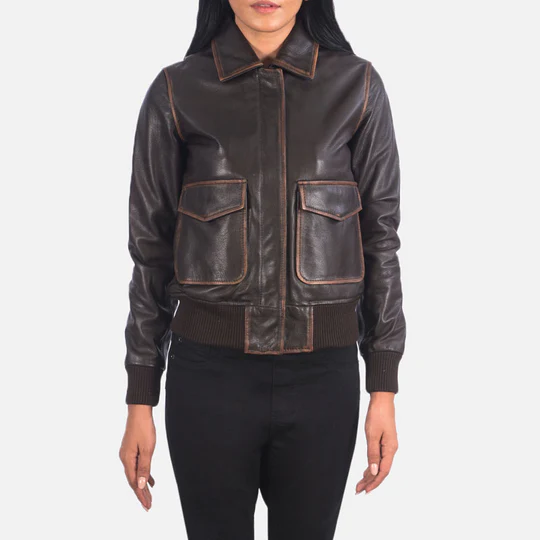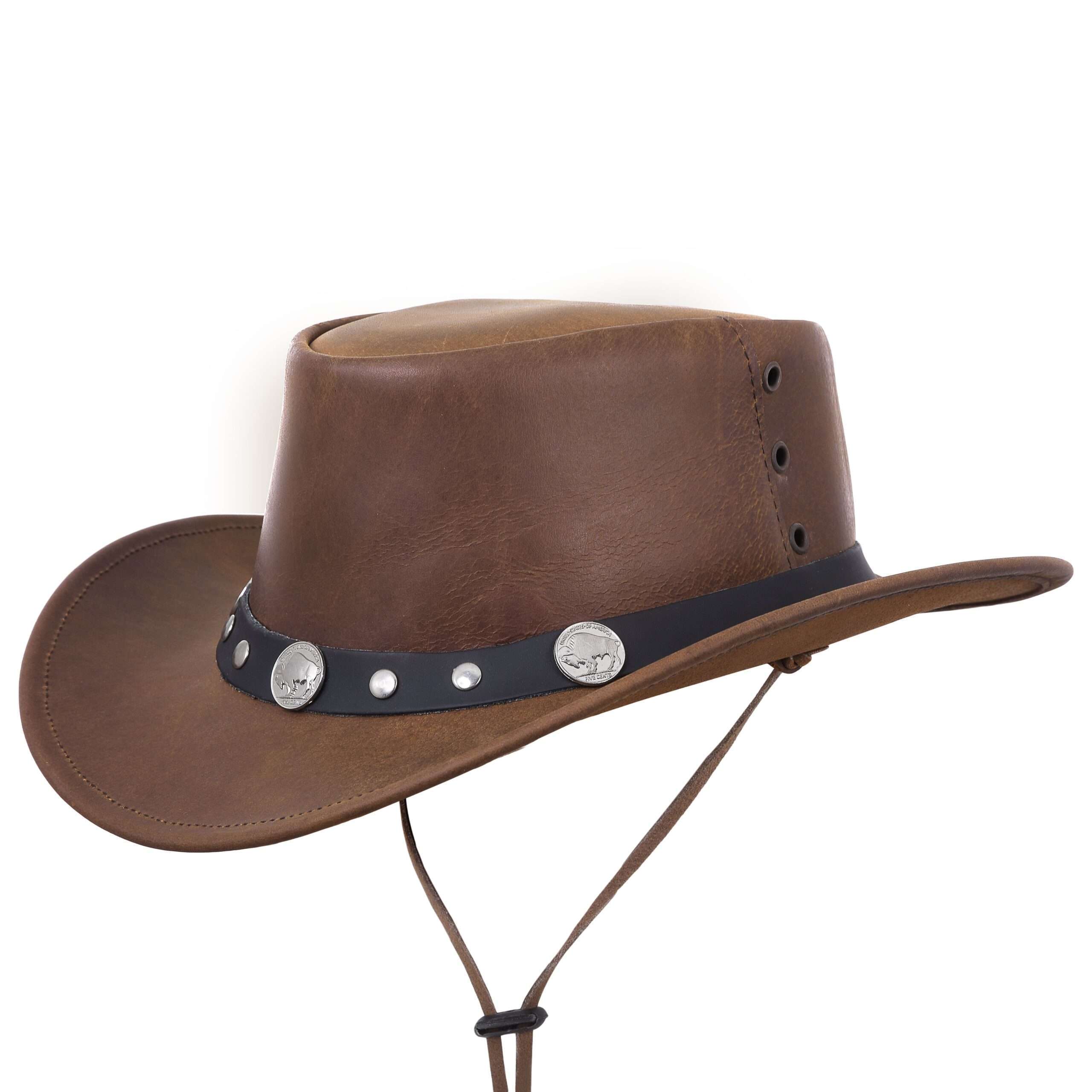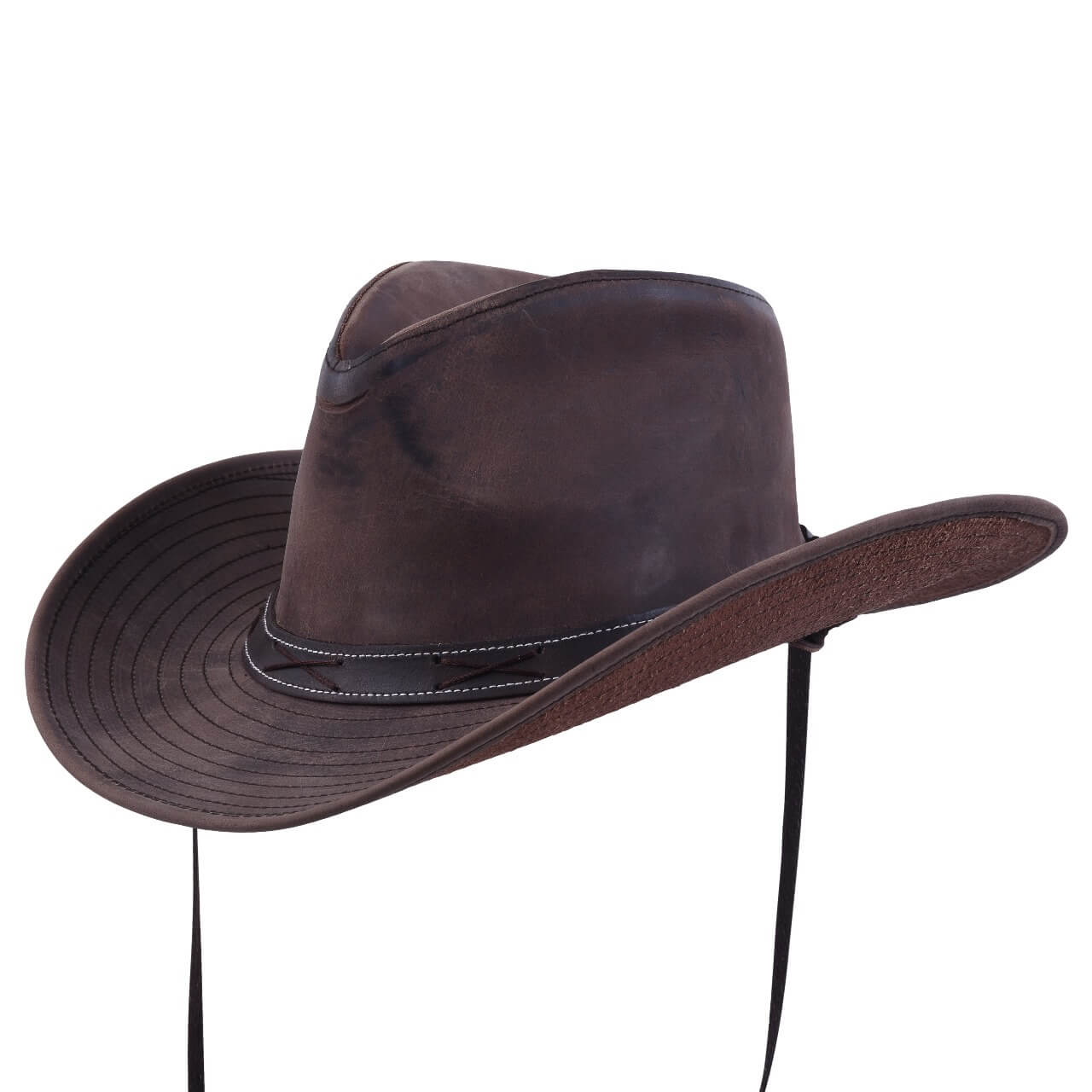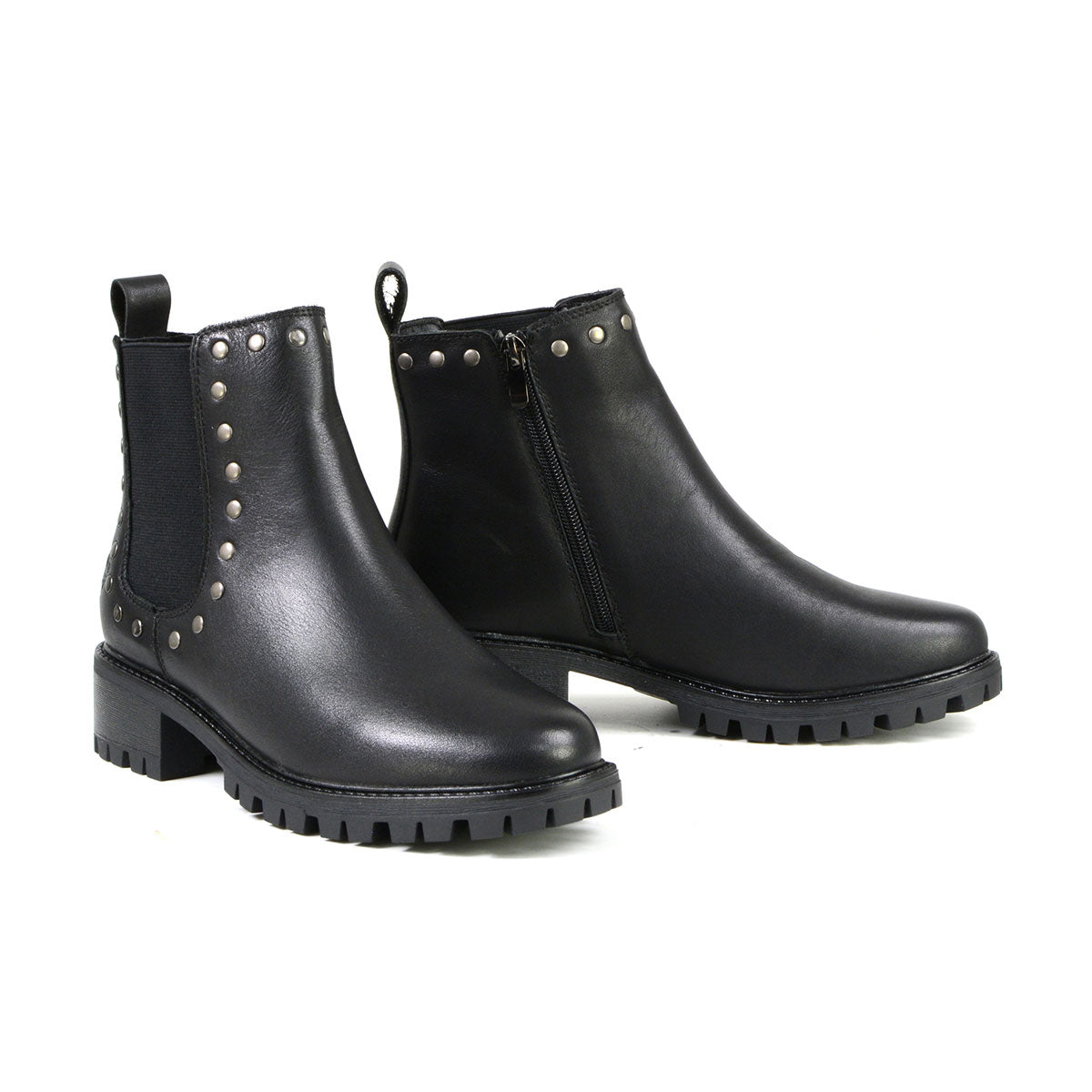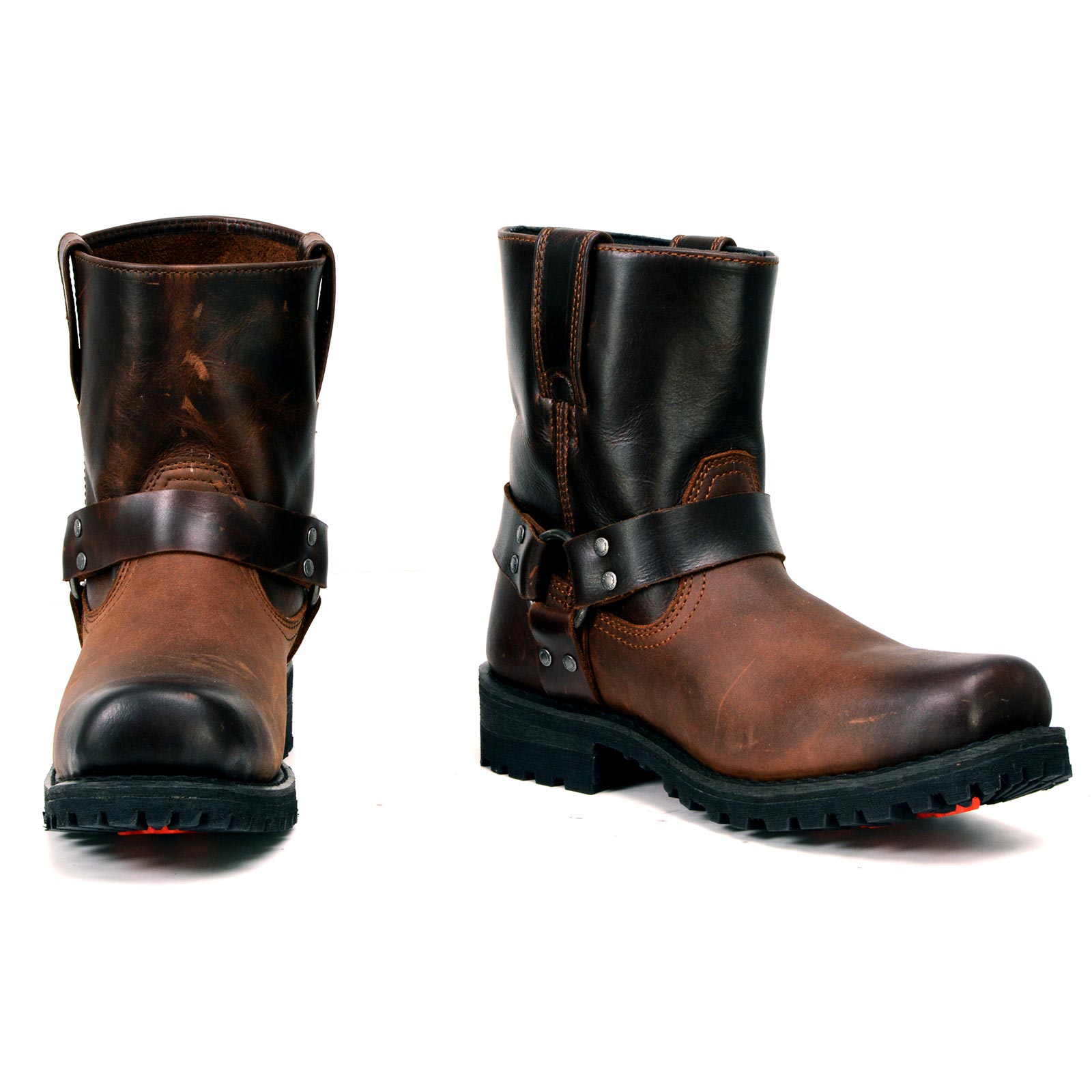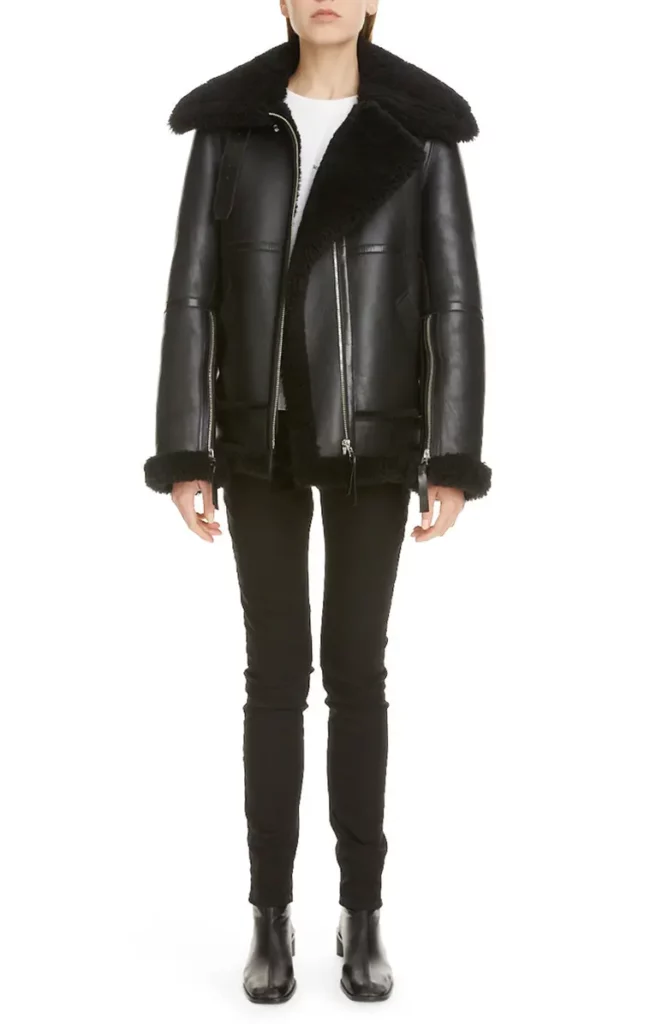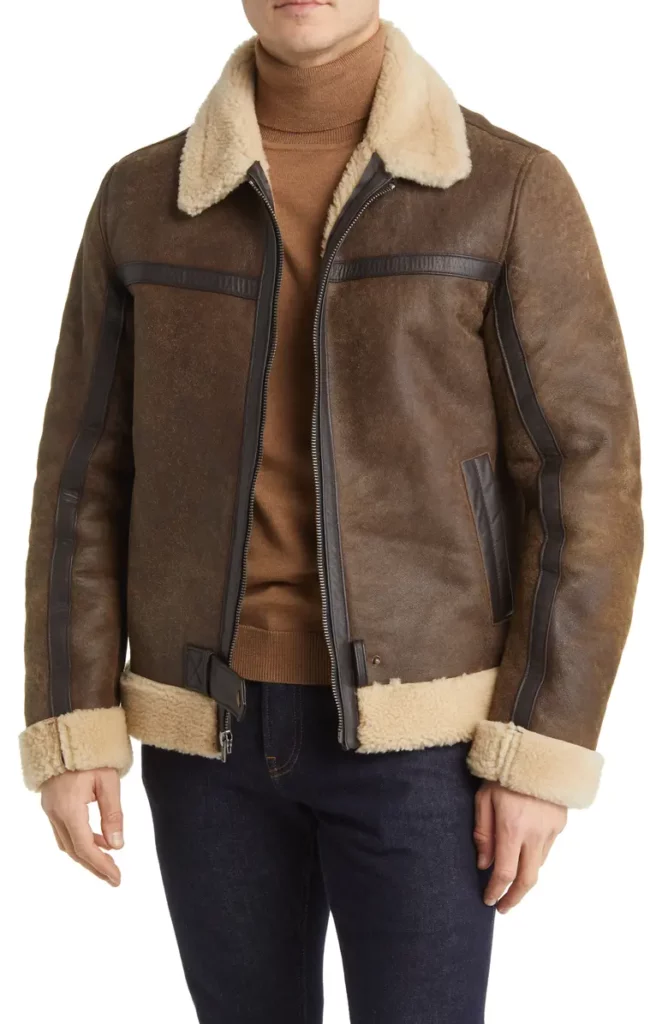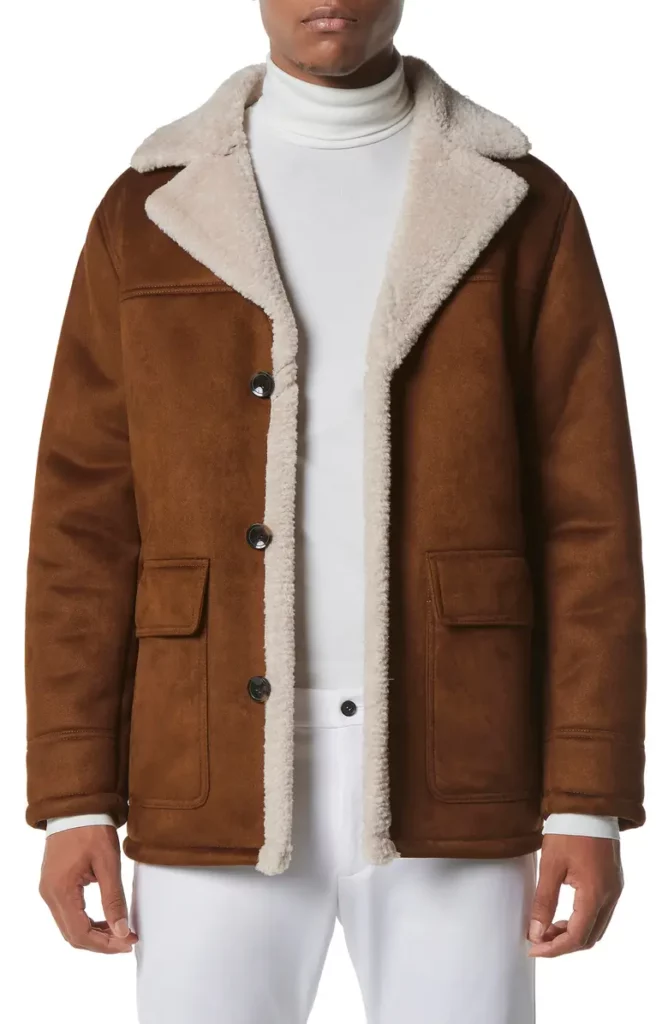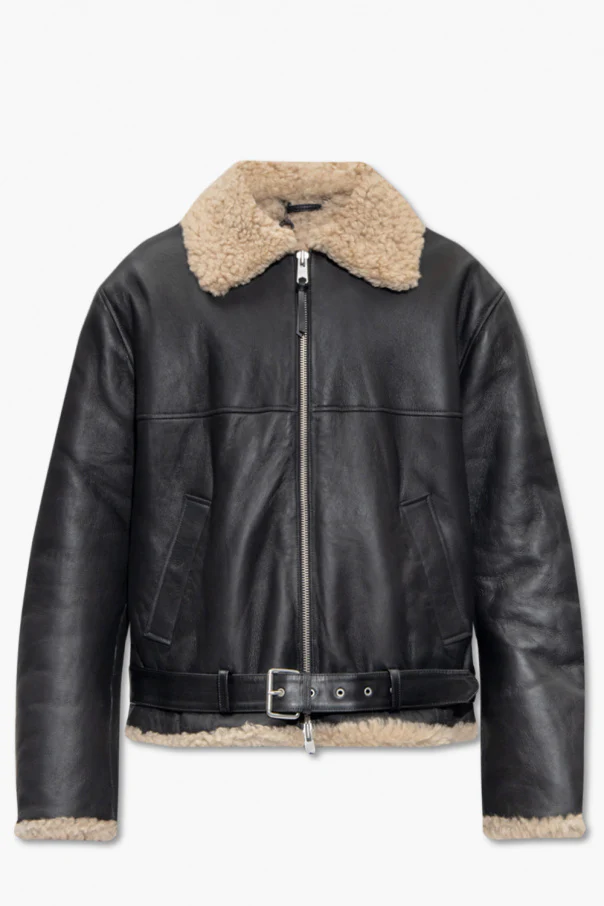Sheepskin jackets have a rich heritage tracing back centuries, rooted in functionality, warmth, and timeless style. Understanding their evolution illuminates their enduring appeal today.
Black Aviator B-3 Sherpa Leather Jacket Women’s
Origins and Evolution
The history of sheepskin jackets dates to ancient times when civilizations crafted garments for protection from harsh climates. Nomadic cultures, like Mongols and Tibetans, used sheepskin for warmth amid freezing temperatures. Over the centuries, this functional attire evolved into a symbol of prestige and luxury.
Cultural Significance
Sheepskin jackets hold cultural significance across various regions. In countries like Iceland and Norway, they’ve been integral to traditional attire, reflecting local climates and societal needs. The jackets’ adaptability and durability have made them staples in wardrobes worldwide.
Historical Transformation
The 20th century witnessed a renaissance in sheepskin jacket popularity. Aviators during World War I relied on these jackets for insulation at high altitudes, cementing their association with rugged durability and style.
Fashion Evolution
From utilitarian beginnings, sheepskin mens jackets crossed into the fashion realm. The iconic shearling jacket gained popularity in the mid-20th century, embraced by celebrities and trendsetters, solidifying its place in haute couture.
Sherpa Lined Genuine Leather Flight Bomber Aviator Jacket
Materials and Construction of Sheepskin Jackets
Sheepskin jackets boast a meticulous construction process and utilize diverse types of sheepskin to achieve distinct styles and functionalities.
A. Types of Sheepskin Used
Shearling
Shearling, a premium sheepskin variety, features the wool left intact on one side and leather on the other. This type of sheepskin offers natural insulation and a luxurious feel, making it ideal for jackets meant to withstand colder climates.
Nappa
Nappa sheepskin undergoes extensive tanning processes, resulting in a soft, smooth leather texture. It’s commonly used for jackets that prioritize a sleek and elegant appearance without compromising on durability.
Toscana
Toscana sheepskin is recognized for its long, silky wool and supple leather underside. Jackets crafted from Toscana sheepskin exude opulence, featuring a distinctive fur-like appearance and a plush feel.
Merino
Merino sheepskin, known for its fine and densely packed wool, delivers exceptional warmth and softness. Jackets made from Merino sheepskin are lightweight yet incredibly insulating, perfect for a wide range of climates.
B. Jacket Construction and Components
Cutting and Stitching
A black sheepskin jacket is meticulously crafted through precise cutting and stitching techniques. Expert craftsmen cut the sheepskin into panels, ensuring minimal waste while optimizing the jacket’s fit and style.
Seams and Linings
The seams of sheepskin jackets are reinforced for durability, with attention paid to each stitch to prevent fraying or weakening over time. Quality linings, often made of silk or satin, add comfort and a luxurious finish to the interior.
Zippers and Fastenings
High-quality zippers or fastenings are integral components of sheepskin jackets. They are selected for durability and functionality, ensuring ease of use and long-term reliability.
Finishing Touches
The finishing touches on sheepskin jackets involve meticulous attention to detail. This includes handcrafted collars, cuffs, and hems, adding sophistication and individuality to each piece.
Men’s Brown Suede Leather Sherpa Lined Coat
Understanding Dry Cleaning
Dry cleaning is a specialized cleaning process used to clean garments and textiles without water. This method involves the use of a solvent to remove stains and dirt, ensuring the cleanliness and preservation of delicate fabrics that may be damaged by traditional washing methods.
A. What is Dry Cleaning?
Dry cleaning is a fabric-cleaning process that employs a chemical solvent instead of water. This solvent effectively dissolves stains and oils from clothing without causing damage to the fabric or altering its texture. Garments such as wool, silk, and suits with intricate details or embellishments benefit significantly from dry cleaning, as water could potentially distort their shape or texture.
B. Process of Dry Cleaning
Inspection and Tagging
The dry-cleaning process initiates with a thorough inspection of the garment for stains, tears, or specific cleaning instructions. Each item is tagged to ensure proper identification throughout the cleaning cycle.
Pre-Treatment
Stubborn stains are pre-treated using specialized solutions tailored to the stain’s nature. This step ensures maximum stain removal during the cleaning process.
Machine Cleaning
Garments are placed in a machine that resembles a large washing machine. Instead of water, a solvent—commonly perchloroethylene or hydrocarbon—is used along with gentle agitation to remove dirt and stains from the fabric.
Drying and Finishing
After the cleaning cycle, the garments are dried using warm air and then steam-pressed to eliminate wrinkles and restore their shape and texture.
Post-Inspection and Packaging
Once cleaned and pressed, the garments undergo a final inspection to ensure quality standards are met. They are then packaged carefully to prevent creasing before being returned to the customer.
C. Pros and Cons
Pros of Dry Cleaning
- Gentle on Fabrics: Dry cleaning is gentle on delicate fabrics that may shrink or lose shape when washed with water.
- Effective Stain Removal: Stubborn stains like oil, grease, or ink are effectively removed through dry cleaning.
- Convenience: It’s a convenient option for individuals with busy schedules, offering professional cleaning without the need for home washing.
Cons of Dry Cleaning
- Chemical Use: The solvents used in dry cleaning can be harsh and potentially harmful to the environment if not handled properly.
- Cost: Dry cleaning can be more expensive than traditional laundry methods due to the specialized equipment and processes involved.
- Not Suitable for All Fabrics: Some fabrics may not react well to dry cleaning solvents, necessitating alternative cleaning methods.
B-3 Aviator RAF Leather Black Shearling Jacket
Can Sheepskin Jackets Be Dry Cleaned?
Dry cleaning sheepskin jackets requires careful consideration due to the unique properties of sheepskin and the potential impact of the dry-cleaning process.
A. Factors Affecting Dry Cleaning Suitability
Material Composition
Sheepskin jackets consist of both wool and leather, presenting a challenge for traditional dry-cleaning methods. The interaction between these materials during the cleaning process can lead to alterations in texture and shape.
Chemical Exposure
The chemicals used in dry cleaning solvents may affect the natural oils present in sheepskin, potentially stripping them away and causing the material to lose its suppleness and luster.
Stain Types
The suitability of dry cleaning also depends on the type of stain present on the jacket. While dry cleaning can effectively remove some stains, particularly oil-based ones, it may struggle with certain stubborn or water-based stains.
B. Manufacturer Recommendations
Many sheepskin jacket manufacturers advise against dry cleaning. Instead, they recommend spot cleaning with a damp cloth or using specialized sheepskin cleaning products to maintain the jacket’s quality.
C. Expert Opinions and Experiences
Leather and Fur Experts
Experts in leather and fur often caution against dry cleaning sheepskin jackets due to the risk of damage. They emphasize the importance of using gentle cleaning methods specific to sheepskin to preserve its integrity.
User Experiences
Several individuals have reported mixed experiences with dry cleaning their sheepskin jackets. While some have observed minimal impact, others noted changes in texture, shrinkage, or discoloration post-dry cleaning.
Women’s Black Sherpa Leather Coat
Professional Cleaning Options for Sheepskin Jackets
Opting for professional cleaning services tailored to sheepskin garments can offer a reliable and specialized approach to maintaining the quality of these jackets.
A. Specialized Sheepskin Cleaning Services
Professional Leather and Fur Cleaners
Seek out reputable cleaners specializing in leather and fur. These professionals possess the expertise and equipment to clean sheepskin jackets without compromising their integrity.
Eco-Friendly Cleaning Services
Some cleaning services offer eco-friendly alternatives that use gentler, non-toxic solvents, minimizing the impact on the sheepskin while effectively removing stains.
In-House Sheepskin Specialists
Certain high-end boutiques or brands provide in-house cleaning services specifically tailored to their sheepskin products. These services often ensure the use of appropriate cleaning techniques and products.
B. Recommendations for Professional Cleaning
Research and Referrals
Prioritize cleaners with positive reviews and referrals, particularly those experienced in handling sheepskin garments. Researching online or seeking recommendations from friends can lead to trustworthy options.
Consultation and Inspection
Before committing to a cleaning service, consult with the professionals. Ensure they inspect the jacket thoroughly to assess the best cleaning approach and discuss any specific concerns or instructions.
Follow Manufacturer Guidelines
If available, follow the manufacturer’s recommendations regarding professional cleaning. Some brands provide guidance on certified cleaners or preferred cleaning methods.
DIY Cleaning Methods for Sheepskin Jackets
Implementing DIY cleaning methods can offer a proactive approach to maintaining the cleanliness and quality of sheepskin jackets without resorting to professional services.
A. Using Mild Detergents
Wool-Specific Detergents
Opt for mild detergents specifically formulated for wool or delicate fabrics. These detergents are gentle on the sheepskin, ensuring effective cleaning without causing damage.
Handwashing Technique
Fill a basin with lukewarm water and a small amount of the wool-specific detergent. Gently submerge the jacket and lightly agitate the water, allowing the detergent to work on stains. Rinse thoroughly with clean water.
B. Gentle Brushing Techniques
Soft-Bristled Brush
Use a soft-bristled brush to gently remove surface dirt or debris. Brush in the direction of the wool’s natural grain to prevent damage to the fibers.
Suede Brush
For sheepskin jackets with suede exteriors, employ a specialized suede brush to maintain the texture and appearance of the material. Brush gently to avoid damaging the suede.
C. Steam Cleaning Options
Steamers with Caution
Use handheld steamers with caution. Holding the steamer at a safe distance, apply steam to the jacket’s surface to freshen it up and help eliminate odors. Avoid direct contact with the sheepskin to prevent moisture damage.
Alternatives to Dry Cleaning for Sheepskin Jackets
Opting for alternative cleaning methods can help maintain the quality and longevity of sheepskin jackets without subjecting them to the potential risks associated with traditional dry cleaning.
A. Spot Cleaning Techniques
Gentle Brushing
Using a soft-bristled brush, gently brush away surface dust and dirt. This technique helps prevent particles from embedding into the fabric.
Damp Cloth Spot Cleaning
Dampen a soft cloth with lukewarm water and mild detergent specifically formulated for sheepskin or leather. Gently dab the stained area without excessively wetting the jacket.
Vinegar Solution
For tougher stains, create a solution of equal parts water and white vinegar. Test it on a small, inconspicuous area first, then apply lightly to the stain using a soft cloth.
B. Home Remedies for Maintenance
Cornstarch or Baking Soda
For oil-based stains, sprinkle cornstarch or baking soda onto the affected area. Leave it overnight to absorb the oil, then brush or gently wipe away the powder.
Leather Conditioner
Apply a specialized leather conditioner designed for sheepskin jackets. This helps restore moisture and maintain the suppleness of the leather while conditioning the wool.
Natural Air Drying
After spot cleaning, allow the jacket to air dry naturally. Avoid exposure to direct sunlight or heat sources as they can damage the sheepskin.
Precautions and Best Practices for Sheepskin Jacket Care
Taking precautions and adhering to best practices is crucial for maintaining the quality and longevity of sheepskin jackets.
A. Pre-Cleaning Inspections
Stain Identification
Before any cleaning process, inspect the jacket for stains and identify their nature. This allows for appropriate pre-treatment and ensures a targeted cleaning approach.
Fabric Compatibility Check
Check for manufacturer instructions or tags that indicate the jacket’s cleaning specifications. Verify the compatibility of any cleaning method with the specific type of sheepskin used in the jacket.
B. Avoiding Common Mistakes
Excessive Moisture
Avoid saturating the sheepskin with excessive moisture during cleaning. Over-wetting can damage the natural fibers and alter the jacket’s appearance and texture.
Harsh Chemicals
Refrain from using harsh chemicals or bleaching agents on sheepskin jackets. These substances can cause irreversible damage to the material and compromise its integrity.
Direct Heat Exposure
Avoid exposing the jacket to direct heat sources such as radiators or hairdryers. Heat can cause the sheepskin to dry out and lose its natural oils, leading to stiffness and cracking.
Sunlight Exposure
Limit the jacket’s exposure to direct sunlight for prolonged periods. Sunlight can fade the colors and weaken the fibers, affecting the jacket’s overall quality.
Stain Removal Tips for Sheepskin Jackets
Effectively addressing stains on sheepskin jackets requires a tailored approach based on the type of stain encountered and a careful consideration of stain removal do’s and don’ts.
A. Addressing Different Types of Stains
Oil-Based Stains
Do:
- Blot the stain gently with a clean, dry cloth to absorb excess oil.
- Apply cornstarch or baking soda to absorb the remaining oil. Allow it to sit before brushing it off.
Don’t:
- Use water directly on oil stains, as it can spread the stain further.
- Rub the stain vigorously, as it may embed it deeper into the fabric.
Water-Based Stains
Do:
- Blot the stain immediately with a clean, dry cloth to absorb as much liquid as possible.
- Use a damp cloth with mild detergent specifically formulated for sheepskin to gently dab the stain.
Don’t:
- Rub the stain aggressively, as it can spread and set the stain deeper into the fabric.
- Use excessive water, as it can damage the sheepskin.
B. Stain Removal Do’s and Don’ts
Do’s
- Act promptly: Address stains as soon as they occur to prevent them from setting.
- Test cleaning products: Test any cleaning solution on a small, inconspicuous area first.
- Blot, don’t rub: Gently blot stains to avoid spreading or embedding them further.
Don’ts
- Use harsh chemicals: Avoid using strong detergents or bleach, as they can damage the sheepskin.
- Apply heat directly: Refrain from using hairdryers or direct heat sources, as they can alter the jacket’s texture.
- Over-wet the jacket: Excessive moisture can damage the sheepskin; use minimal water when cleaning.
Conclusion
Effectively addressing stains on sheepskin jackets requires a tailored approach based on the type of stain encountered. Understanding stain removal do’s and don’ts is crucial for maintaining the jacket’s pristine appearance. Act promptly, test cleaning products, and avoid harsh chemicals or excessive moisture. By following these guidelines, individuals can ensure the longevity and pristine condition of their cherished sheepskin jackets.
